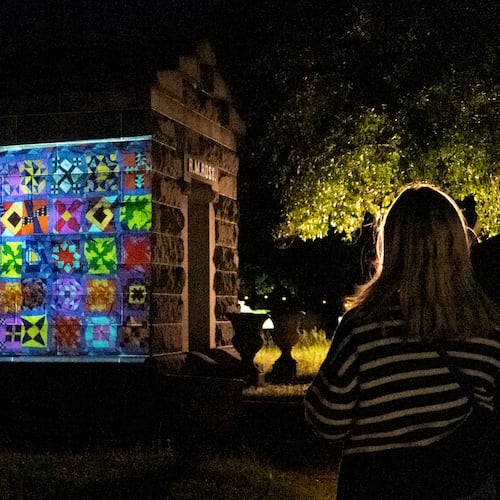In Colson Whitehead's new novel, "The Nickel Boys," Elwood Curtis dreams of going to college. He's a smart kid, able to run the general store where he works while also studying hard in high school and staying away from bad neighborhood influences.
Elwood mostly keeps out of trouble and dreams of a better future. That dream is fueled, as it was for so many black boys of the 1960s, by the most iconic dreamer in American history. Or, as Whitehead puts it early on, “’Martin Luther King at Zion Hill’ was the only album (Elwood) owned and it never left the turntable.”
That collection of King’s speeches animates the one persistent bit of trouble Elwood gets into: involvement in 1960s civil rights activism. Elwood’s grandmother Harriet, with whom the boy lives in Tallahassee, Florida, wants him well away from that “agitation.”
“Hard work was a fundamental virtue, for hard work didn’t allow time for marches or sit-ins,” she believes.
Harriet demands that Elwood stay away from marches and to keep at the good job he has with his “good” white employer, just as she’s done all these years. “Duty might protect him,” she thinks, “as it had protected her.”
Elwood goes marching anyway.
As with Anthony Grooms’ “Bombingham,” “The Nickel Boys” evokes the confusion and camaraderie of young people’s civil rights work gracefully, without sentiment. There, Elwood finds his history teacher and, to his surprise, several of his classmates.
“He’d kept his movement dreams so close,” Whitehead writes, “that it never occurred to him that others in his school shared his need to stand up.”
Dreams persist in Whitehead’s hands — the promise of the American Dream for black folks, individual dreams of longing and achievement, straight-up surreal dreams on occasion. For African Americans then and now, though, systemic American racism curdles those dreams into something worse than a nightmare. At least you can wake up from bad dreams.
In “The Nickel Boys,” Elwood finds himself in an institutional hellscape simply because he is a young black man in the wrong place at the wrong time. One of Whitehead’s wicked ironies here is that it’s not Elwood’s protesting or his letters to the editor, which the Tallahassee Register never publishes though the Chicago Defender does, that get him under the law’s thumb.
Instead, it’s Elwood’s educational aspirations that doom him. He gets permission to take college courses while still a high-schooler, rare for a black boy, but the school is too far for him to bike there. He hitchhikes with a man, who Elwood doesn’t realize is driving a stolen car until they get pulled over by a state trooper. Elwood goes down along with the thief.
That’s how he ends up at the segregated Nickel Academy, a juvenile reformatory for boys black and white alike, but, of course, segregated. Whitehead’s blunt but evasive language conveys how awful it is without being so gruesome that we flinch from the pain. Because if we flinch, we don’t see; we don’t look Jim Crow’s sin against black people in the face.
By suggesting the horrors of Nickel, the reader has to fill in the gaps, to imagine how the institution’s “reforms” actually worked. We have to lean in. By doing so, we empathize with the poor young men (children, really) trapped within it.
Nickel is so bad that its inmates perpetually try to escape its everyday indignities and brutalities, which include rape, solitary confinement and torture. Many of those escapees — and Elwood is eventually one — end up dead, buried anonymously in the section called Boot Hill.
Whitehead reveals, though, that Nickel’s traps are mental, too. Harriet believes, wrongly, that Elwood could have avoided the place if he had just kept his nose down and stayed away from civil rights protests. Even Elwood, when he’s inside the institution, “consoled himself with the notion that he just had to keep doing what he’d always done: act right.” He’s wrong, too.
And, when he’s finally released from Nickel, he’s wrong to think the monstrous place has left his heart and head. Living in New York City afterward, he often thinks he sees the faces of fellow Nickel Boys in the faces of strangers on the street, in subway cars, particularly the face of his dear friend Turner, who’s less idealistic about black potential and more cynical about American institutions.
Occasionally, Elwood runs into Nickel Boys for real, but largely they’re in his head, their tears and screams inescapable even in sleep. Nickel invades his dreams, haunts his waking life.
Whitehead toggles the narrative between the 1960s and the present, and he precedes it with a prologue about archaeology students finding human remains in Boot Hill. The reformatory’s terrors are seen for the first time by the larger world.
Its former inmates, though, can’t forget the terrors. “They had managed to scrape up a life after leaving Nickel,” Whitehead writes, “or had never fit in at all with normal people.” Several former Nickel Boys commit suicide, or somehow disappear from the world, “dead in prison, or decomposing in rooms they rented by the week.”
Elwood gets off lucky because he survives and relatively thrives. Survivor’s guilt, though, quivers through him, ultimately in a fashion — beautifully wrought by Whitehead — that is specific to him and undisclosed until the end.
There’s little of Whitehead’s customary sly wit here. The few laugh-out-loud jokes in “The Nickel Boys” are bitter, charred. But the sobriety fits, for this novel frequently brought me up short, made me gasp all the more for its dry, matter-of-fact renderings of the banality of evil, and, more importantly, the necessary resistance to it.
FICTION
‘The Nickel Boys’
by Colson Whitehead
Doubleday
224 pages, $24.95
AUTHOR EVENT
Colson Whitehead. In conversation with Gail O'Neil. 7 p.m. Monday, July 22. $40, includes pre-signed copy of "The Nickel Boys." Atlanta History Center, 130 W. Paces Ferry Road, Atlanta. 404-814-4000, www.atlantahistorycenter.com.
About the Author
Keep Reading
The Latest
Featured


